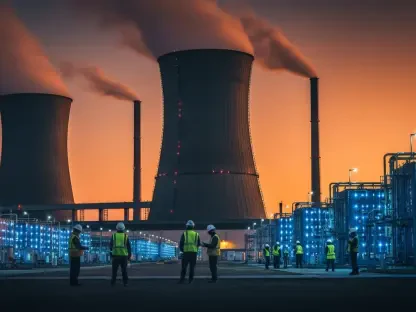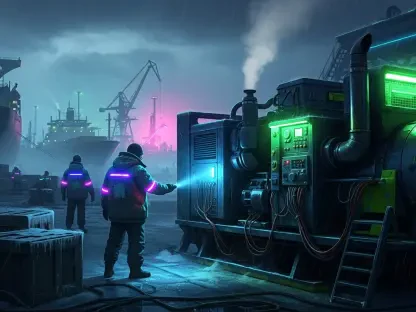Listen to the Article
Think about this hypothetical situation: fusion energy as a reality, not a possibility confined to research labs and scientific theory.
And you might be closer than you think to its advantages. While for decades, fusion remained the ‘what if’ scenario of the energy sector, it has steadily turned into a ‘when and how’. There’s much interested into making this future happen, with innovation-first leaders in manufacturing, technology, and infrastructure shifting the narrative from speculative curiosity to strategic necessity.
Unlike nuclear fission, which acts by splitting atoms, fusion combines them; replicating the process that powers up the sun. The result? A clean, powerful, and virtually limitless source of energy without long-live radioactive waste or carbon emissions. The stakes are, of course, high: global private investment in the technology has exceeded $10 billion in order to turn hope into reality.
Ignoring this potential transition can be one of your biggest business risks. The companies that carefully assess and understand the emerging fusion ecosystem will not only find the transition easier to undertake; they’ll also secure a highly decisive competitive advantage.
Here you have four ways to create and safeguard your own edge, through opportunities to come out on top and emerge as a leader in the fusion energy sector.
Public Mega-Protects Are Working to Reduce the Risks
It’s important to pay attention to the biggest players in the fusion race, including the International Thermonuclear Experimental Reactor in trance. With 33 nations in collaboration, this innovation project was designed to prove the feasibility of fusion as a large-scale, carbon-free power source, using its massive tokamak reactor.
Moreover, it plays a vital role in not only pushing progress, but also as a de-risking agent for the entire industry.
With each milestone, the International Thermonuclear Experimental Reactor provides invaluable data that validates core physics principles, giving private investors the confidence to fund smaller, more agile startups. And for industrial players, their development serves as a long-term signal for enabling future grid stability, showcasing that soon, energy-intensive sectors like data centers and heavy manufacturing hub spots can begin to factor reliable, 24/7 clean baseload power into their 2040–2050 goals.
Private Capital Is Catching Up and Causing a Cambrian Explosion of Progress
Once public projects lay the groundwork for progress, private capital catches up and accelerates the innovation timeline. The opportunities are high; with a surge of investment from venture capital, sovereign wealth funds, and energy corporations offering their budget to a diverse portfolio of fusion ventures.
This is the diversification of technological bets that needs to push the next breakthrough and achieve the level of efficiency needed next.
Besides the traditional tokamak, the market now offers a wide variety of features that attract investor attention and engagement, including stellarators, laser-based inertial confinement, and compact systems using high-temperature superconducting magnets.
Why do these matter? High-temperature superconducting technology, in particular, operates with much smaller and potentially cheaper reactors, opening the door for decentralized or specialized industry applications.
This benefits both those developing the future of fusion energy and the enterprises seeking to partner up and co-develop solutions that will boost their own business edge.
The Focus Is No Longer On Physics. It’s on Engineering.
For many years, the primary question was: Can you achieve a net energy gain from fusion? The experiment at the Lawrence Livermore National Laboratory, in 2022, came with the answer: yes. Through their operations, they produced more energy from a fusion reaction than was used to initiate it, unlocking a new level of innovation for the sector.
But after this question was answered, new ones emerged, related to the matters of industrial-scale engineering. How do you build reactor walls that can withstand intense heat and neutron pressure? How can you efficiently handle the tritium fuel required for even the most common fusion reactions?
These were no longer a matter of physics. They became a pain point related to materials science, robots, and the supply chain.
It’s an opportunity for the industrial firms that have already established themselves to bring their decades of manufacturing and operational expertise to the table.
Why are Artificial Intelligence and Machine Learning the Future?
Until recently, many projects related to fusion didn’t take into account the full power of artificial intelligence and machine learning. That’s because neither technology was advanced enough to push significant progress in the field.
Things have changed in the past years.
For context: the complexity of controlling plasma heated to over 100 million degrees Celsius is immense, and almost impossible to get right. Historically, the progress was slow and relied on the painful process of trial and error.
But new tech advancements are changing the game and rapidly revolutionizing the sector.
Advanced algorithms can now model plasma behavior with incredible accuracy, predicting instabilities before they occur and optimizing reactor designs. The benefits? Drastically reduced time-to-market and lowered costs when it comes to physical experiments.
Recently, Google DeepMind pushed the frontiers further, by developing an artificial intelligence model that has already been used to successfully control the plasma in a tokamak (a task previously notorious for how difficult it is to be managed by human operators).
In Closing
The transition from traditional energy sources to fusion power isn’t going to be a change that’s creeping on you. It won’t even be a sprint; but a marathon; a chain of well-placed decisions, strategic investments, and continuous dedication to innovation.
But it’s the path that will determine the energy market leaders of tomorrow.
For forward-thinking businesses, it’s the perfect time to launch projects focusing on the fusion progress. Designing the right teams, paying attention to the best business opportunities, keeping an eye on emerging technologies; they all play a critical role in keeping your edge. It’s also important to track how your peers are adjusting to the upcoming era of fusion energy; and carefully pinpointing the best partnerships for co-designing a future of progress.
By taking the right steps to prepare, the shift from scientific quest to the race for commercialization will be an easy one to embrace. And why should you fall behind when you have the best chance to gain a foothold and become one of the pioneers unlocking the next-gen power that’ll build a safer, more sustainable, and successful world?









